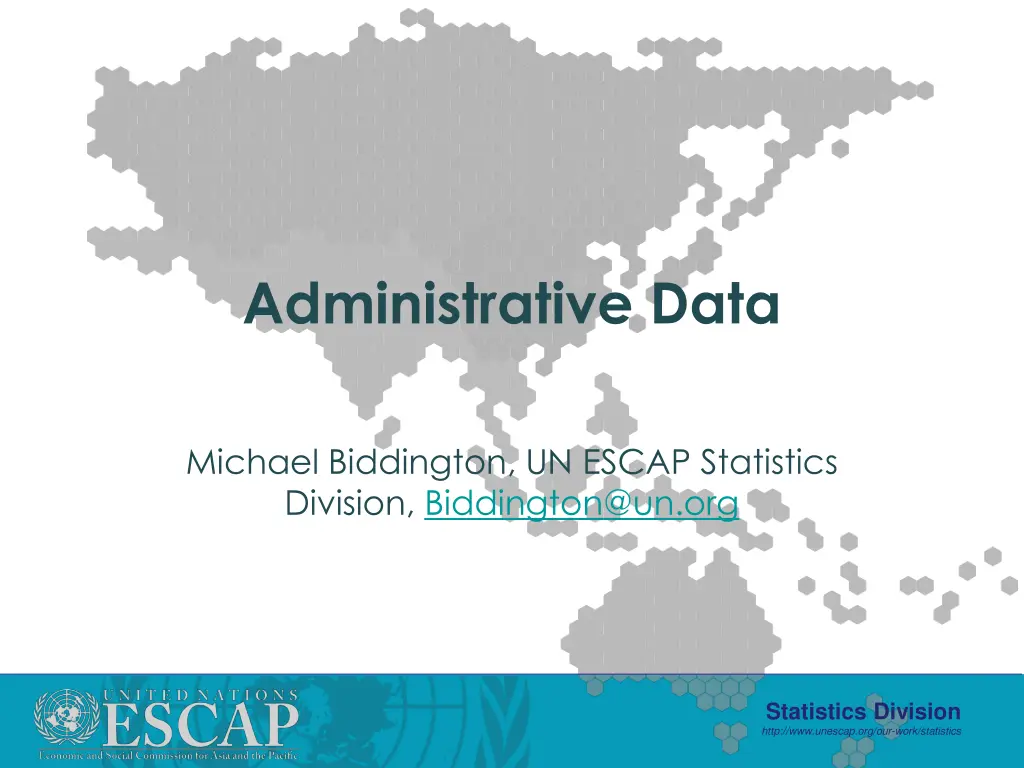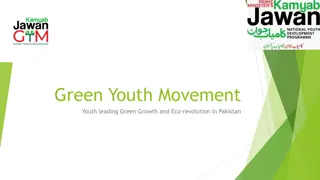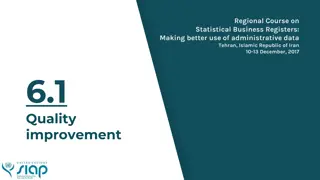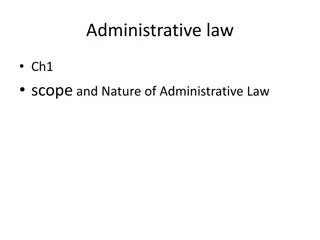
Evolution of Administrative Data in Australian Statistics Division
Explore the evolution of administrative data in the Australian Statistics Division, from historical developments to current practices. Learn about the importance of administrative data in statistical research and its impact on government, businesses, and communities. Discover lessons from Australian data sources and best practices that have shaped the way data is collected, managed, and utilized. Delve into the history of the Australian Business Register and the integration of tax systems to streamline data reporting processes.
Download Presentation

Please find below an Image/Link to download the presentation.
The content on the website is provided AS IS for your information and personal use only. It may not be sold, licensed, or shared on other websites without obtaining consent from the author. If you encounter any issues during the download, it is possible that the publisher has removed the file from their server.
You are allowed to download the files provided on this website for personal or commercial use, subject to the condition that they are used lawfully. All files are the property of their respective owners.
The content on the website is provided AS IS for your information and personal use only. It may not be sold, licensed, or shared on other websites without obtaining consent from the author.
E N D
Presentation Transcript
Administrative Data Michael Biddington, UN ESCAP Statistics Division, Biddington@un.org Statistics Division http://www.unescap.org/our-work/statistics
Introduction Global context Australian history Lessons from Australia Data sources Data providers Best practice Statistics Division http://www.unescap.org/our-work/statistics
Global Context 1. Demand from government, businesses, people & international community for data 2. NSO s need unit level data and economic surveys 3. Quality and quantity of admin data is growing 4. Thus SBRs are key 5. Admin data can be made better Statistics Division http://www.unescap.org/our-work/statistics 3
Australian SBR Admin Data (History) Australian Bureau of Statistics (ABS) First Integrated Register of Businesses (1968-69) Statistics Law admin data Australian Taxation Office (ATO) One Form Group Employer Registration Form All were sent a Mail profiling form Activity (ISIC) & locations Turnover Contact details Used as survey frame for business surveys Statistics Division http://www.unescap.org/our-work/statistics
Australian SBR Admin Data (History) Thirty years of collaboration led to: The New Taxation System (2000) Australia introduced GST (or VAT) Australian Business Register (ABR) Separate agency (ABS & ATO staff) Unique ID all government Registration form designed jointly (ABS & ATO) All businesses, charities, schools, etc have to register Reduced provider burden Enabled data integration Statistics Division http://www.unescap.org/our-work/statistics
Admin Data in Australian SBR (Now) Australian Taxation Office VAT (or GST) Tax Company Tax Wages and Salary Reporting R&D + Other tax concessions Australian Business Register Australian Business Number Australian Securities and Investments Commission Australian Prudential Regulation Authority Australian Charities Tourist Accommodation Type of establishment and star rating Listing is a private (non government) list. Statistics Division http://www.unescap.org/our-work/statistics
Data Selection Australia Country context is essential Issues to consider; Coverage Coherence Bias Cost Quality Purpose Lets consider this given Australia Statistics Division http://www.unescap.org/our-work/statistics
Key Lessons Australia What we learnt from 30 years of admin data Coverage all employers Coherence one primary source / form Bias employers / formal Cost One source / unique ID Quality Second form Purpose design the form Statistics Division http://www.unescap.org/our-work/statistics
Selecting Data Sources Business Registration Systems Social security registers Sectoral lists Types of Administrative Sources Tax Labour and employment registers Records /VAT Statistics Division http://www.unescap.org/our-work/statistics
Selecting Data Sources Utility Company Records Private Sector data poviders Big data Types of Other Sources Directories Statistics Division http://www.unescap.org/our-work/statistics
Selecting Data Sources Data Quality Framework (ABS) Relevance, Accuracy, Timeliness, Interpretability, Coherence, Accessibility Don t try to link them all No one does High cost Statistics Division http://www.unescap.org/our-work/statistics
Communication with Data Providers Empathise You are a risk You aren t their job or purpose Persuade or convince Understand their process Limit your communications / requests No one has perfected this Get an Memorandum of Understanding (MOU) Statistics Division http://www.unescap.org/our-work/statistics
Standard MOUs Conditions for the supply of administrative data Agreed timetable for supply of data How data will be supplied, its format and quality Confidentiality and security of data and its use Engagement protocols around changes to data supply or systems changes. Statistics Division http://www.unescap.org/our-work/statistics
Combining Multiple Data Sources Unique ID Coherence (legal entity or establishment) Unique ID matching can still be wrong If no Unique ID Name matching Fuzzy matching Survey forms Need a human to check Statistics Division http://www.unescap.org/our-work/statistics
Best Practice Statistical Law Data provided by MOU Design data collection processes Shared Unique ID s across government Achieve these and admin data becomes exponentially more useful Statistics Division http://www.unescap.org/our-work/statistics
Q&A Thank you! Statistics Division http://www.unescap.org/our-work/statistics






















